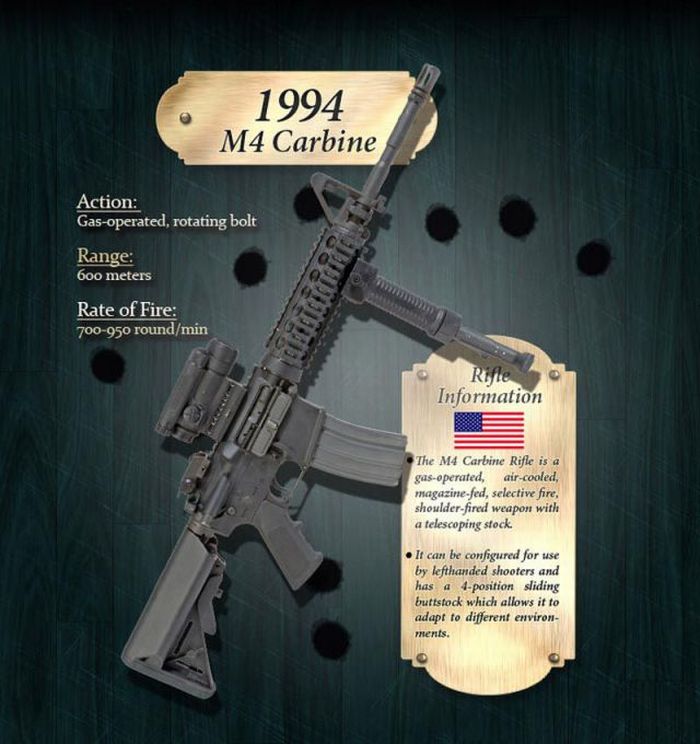|
|
The Evolution Of The Rifle
|
Excessive rotational speed can exceed the bullet's designed limits and the resulting centrifugal force can cause the bullet to disintegrate in a radial fashion.
• Caliber
Rifles may be chambered in a variety of calibers, from .17 to .50 caliber. The term caliber essentially refers to the width of the bullet fired through a rifle's barrel. Larger caliber bullets have more overall power, but small caliber bullets can reach higher velocities and have better overall penetrative power. Armies have consistently attempted to find and procure the most lethal and accurate caliber for their firearms.
The standard calibers used by the world's militaries tend to follow worldwide trends. These trends have significantly changed during the centuries of firearm design and re-design. Muskets were normally chambered for large calibers, such as .50 or .59, with the theory that these large bullets caused the most damage. During World War I and II, most rifles were chambered in .30 caliber, a combination of power and speed. Examples would be the British .303 Lee-Enfield, the American .30-06 M1903 Springfield, and the German 8mm Mauser K98. Within the past 40 years, however, military calibers have become smaller yet, with most armies favoring 5.56 mm or smaller rounds. Examples of firearms in this caliber are the American 5.56 mm M16 and the Russian 5.45 mm AK-74. The switch from .30 to 5.56 mm weapons was because the new rounds are lighter, which means a soldier can carry more of them, and because many military strategists believe the smaller bullet has better penetration power.
|
|









